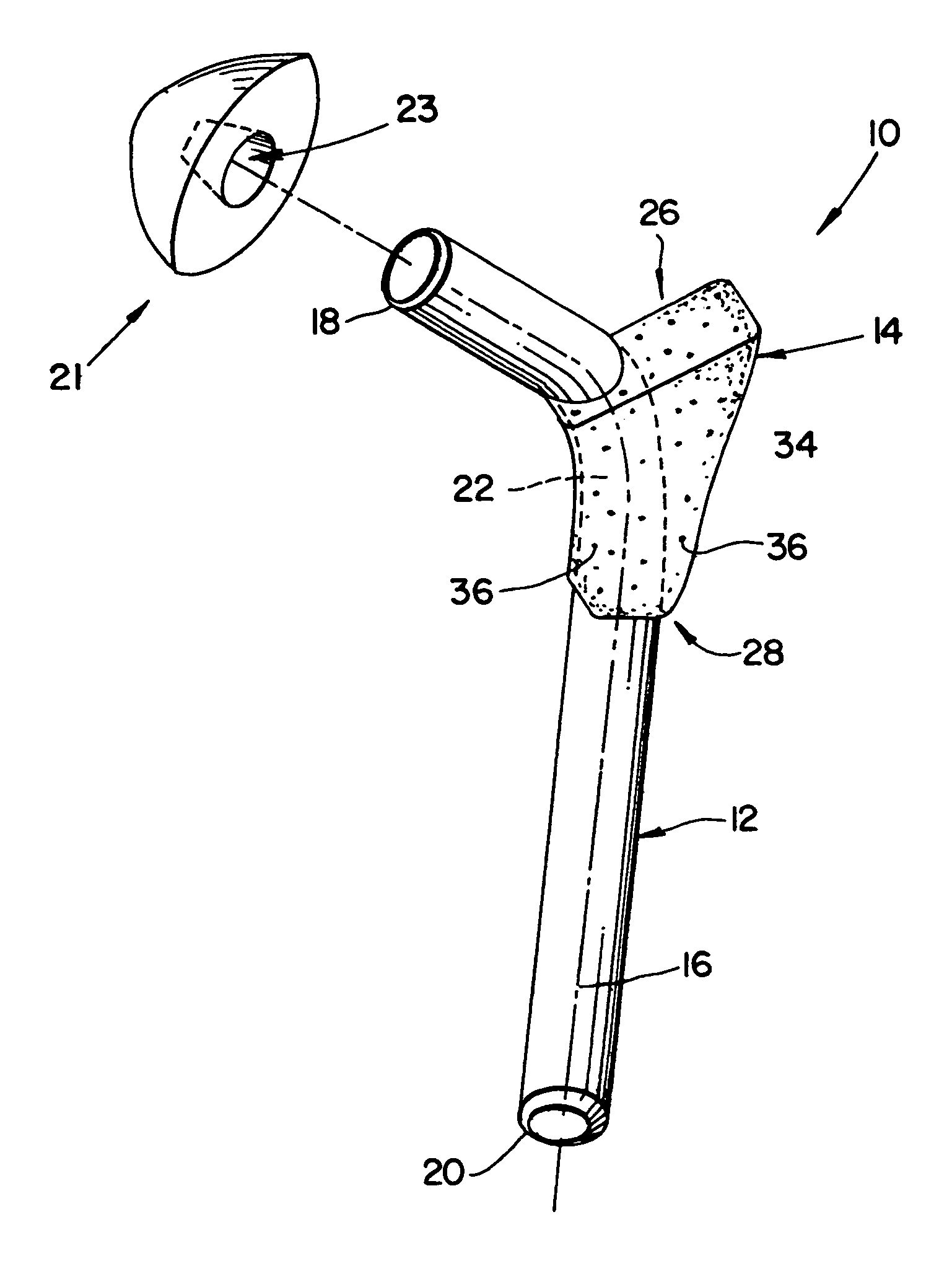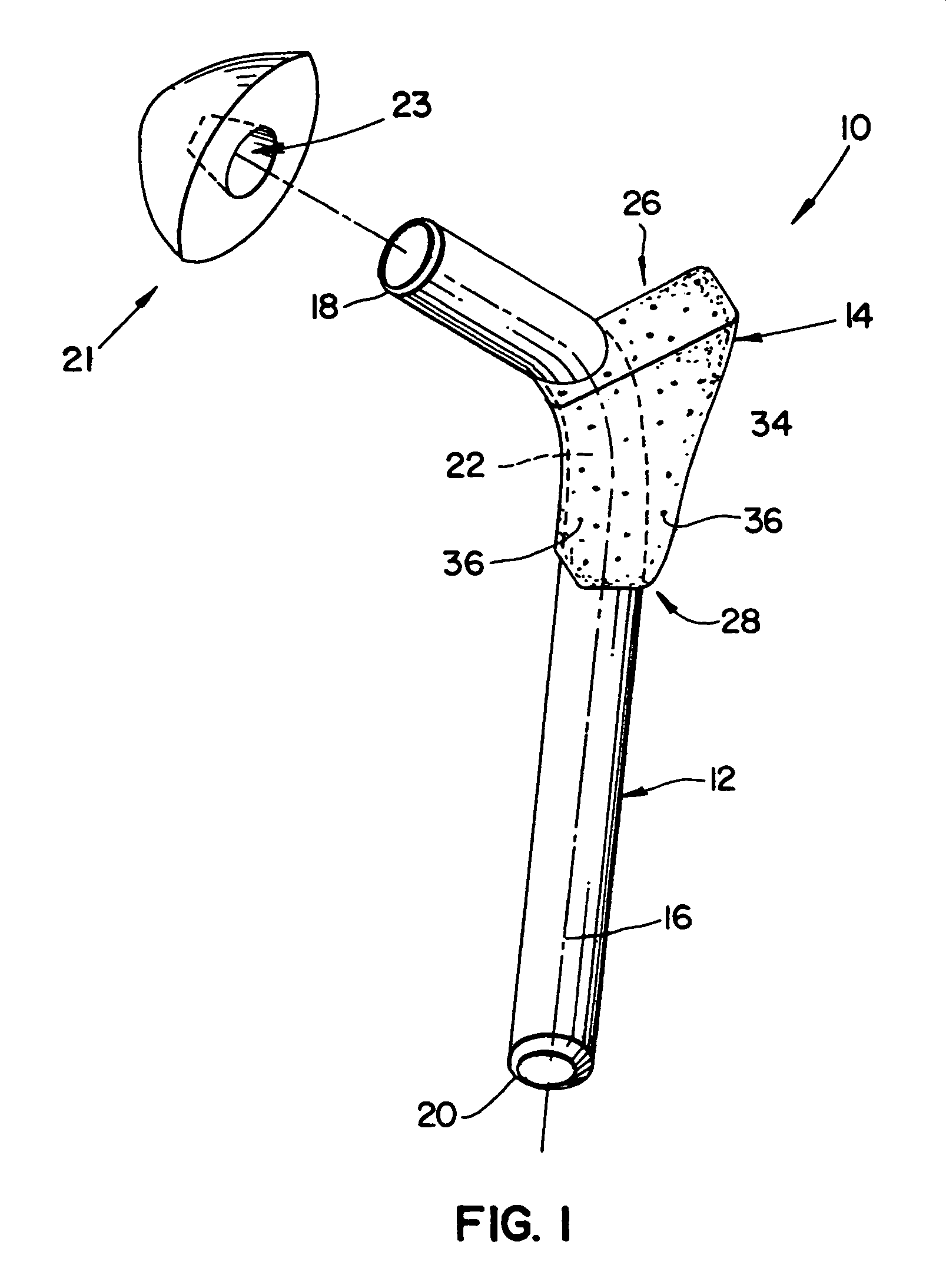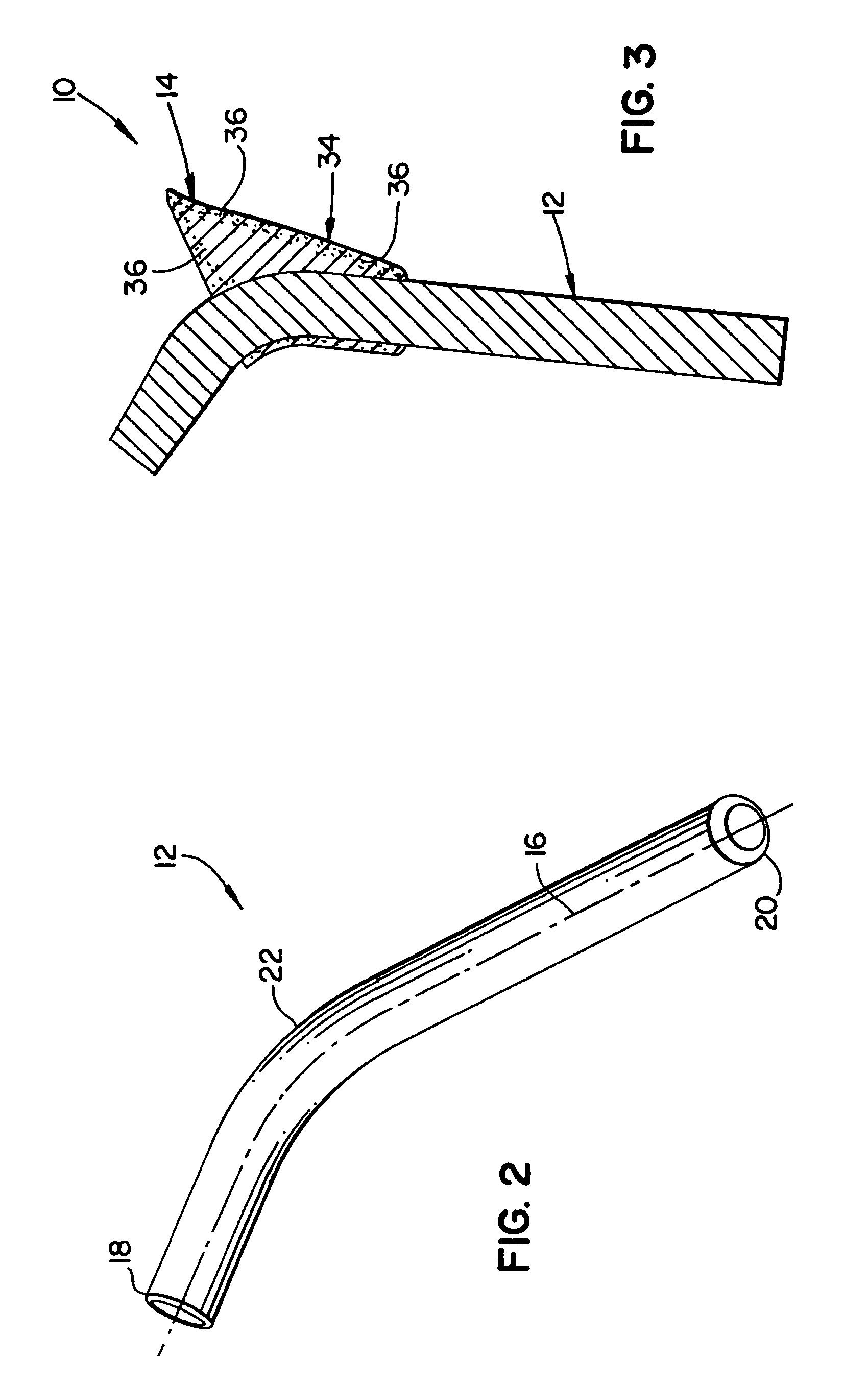Implantable orthopedic prosthesis with textured polymeric surfaces
a polymer and orthopedic technology, applied in the field of orthopedic prostheses, can solve the problems of unwelcome problems, weakening of the bond between the bone and the implant, and subsidence of the implant affixed with cement, so as to reduce the degree of bone resorption and enhance the bonding properties
- Summary
- Abstract
- Description
- Claims
- Application Information
AI Technical Summary
Benefits of technology
Problems solved by technology
Method used
Image
Examples
Embodiment Construction
[0026]Looking to FIG. 1, an implantable orthopedic femoral hip implant 10 is shown. Implant 10 includes a solid metal core 12 and a proximal body 14 formed entirely of a polymer. The metal core 12 is formed as an elongated shaft or body and extends from a first or proximal end 18 to a second or distal end 20. A contoured, longitudinal axis 16 extends down the center of the shaft.
[0027]Looking also to FIG. 2, the first end 18 is tapered and adapted to matingly engage and connect to a femoral bait or head 21. The head 21 includes a tapered bore or recess 23 adapted to receive and engage first end 18.
[0028]The second end 20 is rounded to facilitate insertion into the intramedullary canal at the proximal end of a femur. Between the first and second ends 18 and 20, respectively, the metal core 12 has a proximal portion 22 that connects to the proximal body 14. The proximal portion 22 may have a particular surface finish and geometry for connecting or bonding with the proximal body 14. A ...
PUM
| Property | Measurement | Unit |
|---|---|---|
| thickness | aaaaa | aaaaa |
| pore diameter | aaaaa | aaaaa |
| porosity | aaaaa | aaaaa |
Abstract
Description
Claims
Application Information
 Login to View More
Login to View More - R&D
- Intellectual Property
- Life Sciences
- Materials
- Tech Scout
- Unparalleled Data Quality
- Higher Quality Content
- 60% Fewer Hallucinations
Browse by: Latest US Patents, China's latest patents, Technical Efficacy Thesaurus, Application Domain, Technology Topic, Popular Technical Reports.
© 2025 PatSnap. All rights reserved.Legal|Privacy policy|Modern Slavery Act Transparency Statement|Sitemap|About US| Contact US: help@patsnap.com



